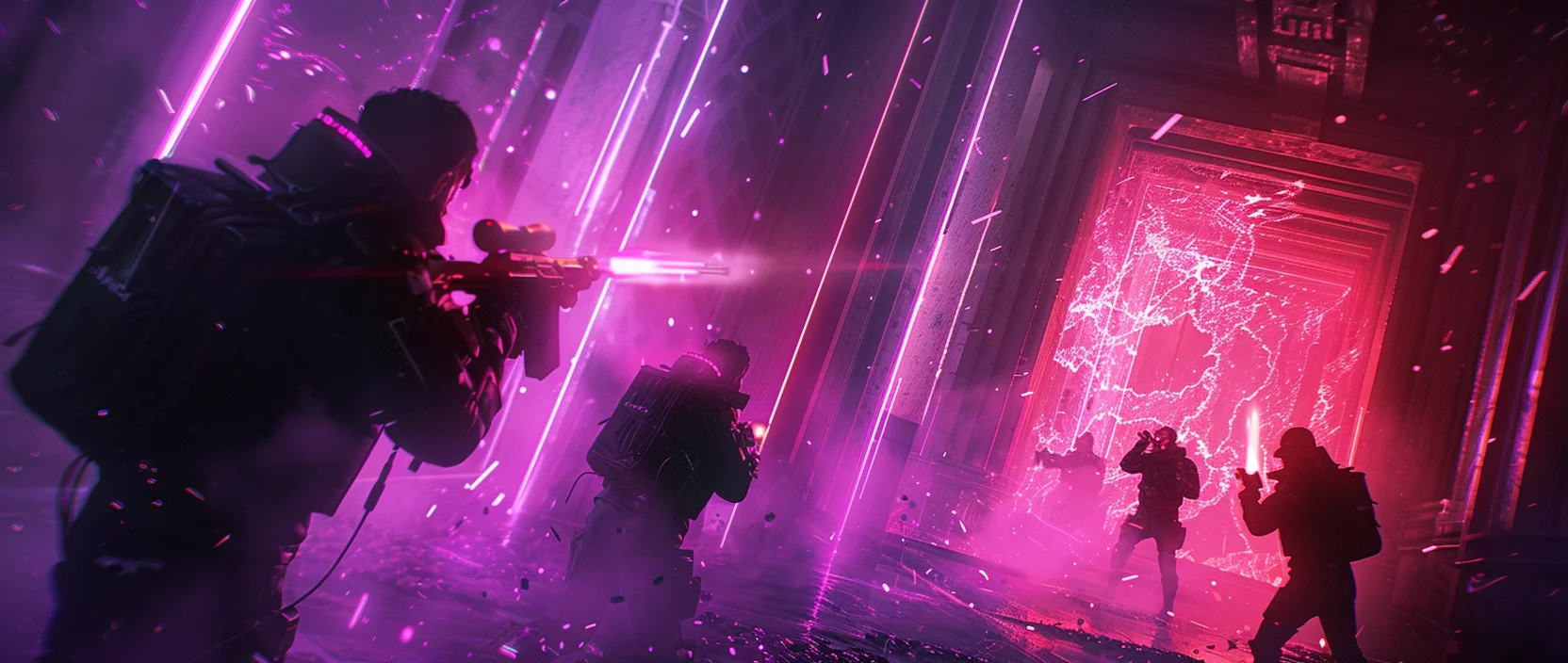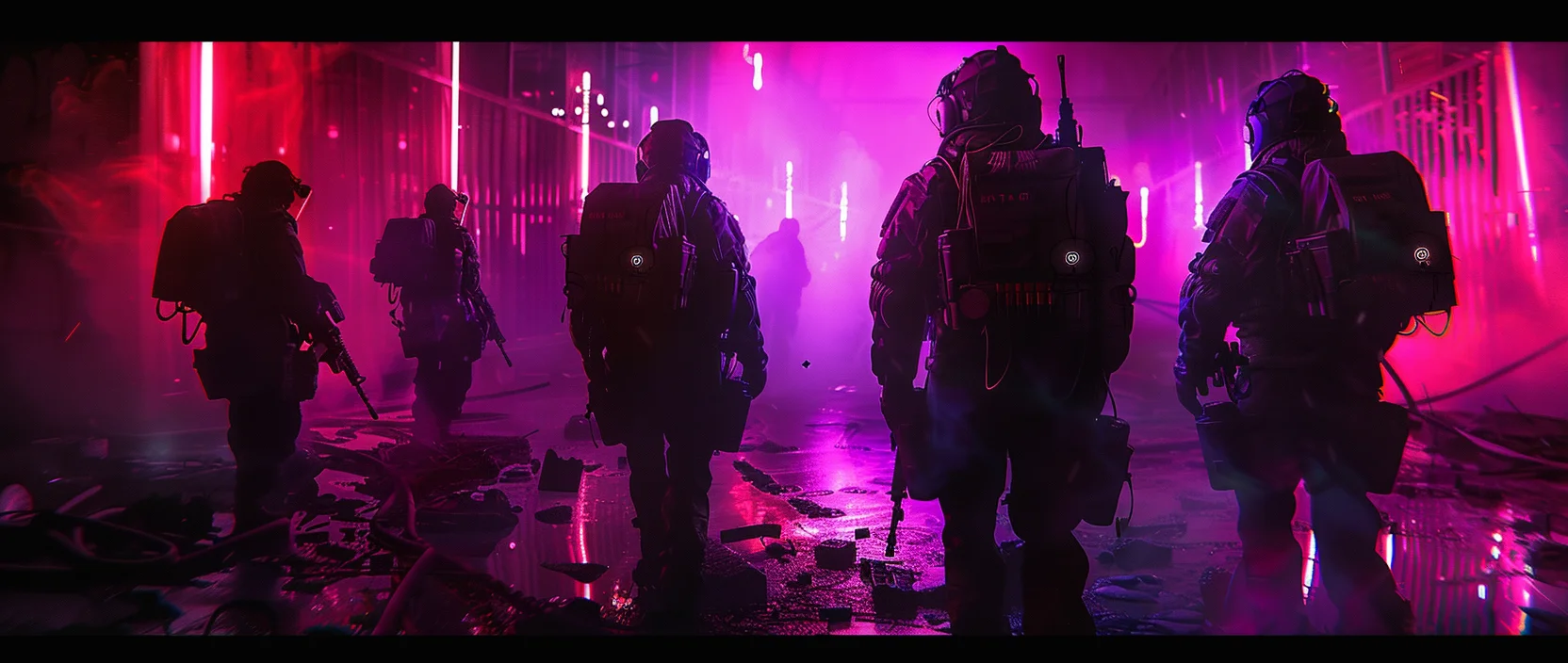The NEX is a cross-platform blockchain game (metaverse) that combines WebGL/WebXR, NFT-driven economy, PvP duels, and expansive open worlds. Players gain true ownership of in-game assets, with the ability to collect, trade, and even earn real value by engaging in GLITCH battles and competitive PvP arenas. In this article, we will explore the technology, economic model, social dynamics, comparisons with traditional MMOs, and future outlook of the project.
Contents
- Technological Foundation and Web3 Integration
- Decentralized Economy and NFTs in The NEX
- Gameplay: Exploration, PvP, and GLITCH Bosses
- Social Dynamics and Interaction
- Comparison with Traditional Games
- Future Outlook and Development of The NEX
- Conclusion

1. Technological Foundation and Web3 Integration
The NEX is built on modern web technologies: WebGL enables high-quality 3D graphics directly in the browser, while WebXR supports immersive VR/AR experiences. This allows the game to run seamlessly across PCs, smartphones, and VR devices without installation, offering near-console visual fidelity. Blockchain mechanics add transparency and security—every transaction is logged publicly, reducing the risk of fraud.
Smart contracts automatically distribute rewards—defeat a GLITCH boss → receive an NFT → ownership is immediately recorded on-chain. This cuts out intermediaries and speeds up prize distribution. The architecture (WebGL + WebXR + NFT + smart contracts) merges immersive graphics, virtual reality, and blockchain into a unified experience.
As a result, The NEX is more than just a game; it's a technological hub combining decentralized asset ownership, cross-platform access, and XR interaction. This foundation supports a scalable metaverse where every component—from battles to asset control—is transparent and player-governed, marking a new standard in Web3 gaming infrastructure.
2. Decentralized Economy and NFTs in The NEX
Unlike traditional MMOs with centralized asset control, The NEX gives players true ownership of their items. Every rare item, skin, or character is a unique NFT. Progression is not tied to time or microtransactions—the economy is driven by the players, creating an organic supply-and-demand market. This is not just in-game trading, but a functional Web3 economy where assets hold real-world liquidity.
The game features mechanics based on digital ownership that allow players to earn or lose assets depending on their strategy and performance:
- GLITCH Bosses: Each boss is tied to an NFT; the victor earns real digital value.
- Duel System: Players can stake NFTs in battles, risking items for potential gain.
- Extraction Dungeons: PvE zones where loot is validated through the blockchain.
This design transforms gameplay into an active marketplace, where decisions aren’t limited to combat, but extend to asset management. The "play for protection or profit" model drives motivation: activity increases asset value, while skill and strategy generate income. The NEX positions itself not just as entertainment, but as a real-value investment opportunity within the evolving metaverse economy.
3. Gameplay: Exploration, PvP, and GLITCH Bosses
The core gameplay loop in The NEX centers on three main modes, each offering a unique balance of risk, strategy, and asset control. With WebGL and WebXR support, the game runs in-browser with visuals rivaling AAA titles, and requires no installation across supported platforms.
Key gameplay modes include:
- Open World Exploration: Players freely traverse rich environments filled with resources, portals, puzzles, and social zones. Exploration isn’t just movement—it’s a means of discovery, interaction, and tactical planning.
- GLITCH Bosses (PvE): Special enemies appear in limited-time events or designated areas. Defeating one rewards a unique NFT, instantly registered on-chain. These battles require coordination, preparation, and carry high competition.
- Duels and Extraction Dungeons (PvP): Competitive zones where players risk their equipment and NFTs. Loot can be kept if successfully extracted—or lost if defeated. Duels may involve staking valuable items, adding intense risk-reward dynamics.
Every choice—whether to engage, what to equip, when to retreat—impacts the economic outcome. The NEX merges action, resource management, and strategic decision-making, turning each session into a meaningful simulation of survival and digital investment.
4. Social Dynamics and Interaction
The community is the foundation of The NEX. Players trade NFTs, compete in duels, participate in tournaments and raids, form groups, and climb leaderboards. Duels and Extraction Dungeons evolve into thrilling public events—discussed, bet on, and fought over for dominance—creating a vibrant, interconnected ecosystem where every participant contributes to the overall dynamics.
Thanks to blockchain transparency and an open economy, in-game trading becomes an essential part of social interaction. Players take on the roles of economic agents—traders, mentors, guild organizers, and event coordinators. They build micro-communities, coordinate raids, exchange insights, and develop relationships based on trust and reputation.
This is more than a game—it is a digital society where economy, competition, and cooperation unfold simultaneously. As a result, players don't just compete; they shape the evolution of the entire platform. They take part in markets, manage assets, develop strategies, and support the decentralized structure. Collective interaction turns The NEX into a social metaverse where success depends not only on individual skill, but also on the ability to communicate, negotiate, and build lasting alliances.

5. Comparison with Traditional Games
To understand how The NEX redefines gaming, it’s useful to compare it to legacy MMOs. Where conventional games rely on centralized control, The NEX enables openness, ownership, and real economic participation.
Key differences between The NEX and traditional MMORPGs:
| Aspect | Traditional MMOs | The NEX |
|---|---|---|
| Economy | Centralized, controlled by the developer | Decentralized, player-driven market |
| Asset Ownership | Held by the platform, not the player | Fully owned NFTs on-chain |
| Monetization | Virtual, non-liquid assets | Earn model through PvP and PvE events |
| Social Features | In-game guilds and limited interactions | Community-driven alliances and cross-market integration |
Thus, The NEX isn’t just another game—it’s a decentralized, living ecosystem. Players actively shape the world, govern its economy, and derive real value from their time and input. It represents a shift from developer-led control to player-led evolution—a true Web3 breakthrough.
6.Future Outlook and Development of The NEX
The NEX is far from static. The team continues to enhance the blockchain infrastructure, focusing on scalability, security, and transaction speed. Simultaneously, monetization tools expand: user-generated content, in-game businesses, and advanced interaction models are on the horizon.
Upcoming features include new PvE mechanics, advanced AR/VR integration, and Web4 technologies—making gameplay even more immersive. The project also focuses on competitive tournaments, esports expansion, and NFT marketplace integration. Platform support is set to grow, with future availability on consoles and AR devices.
These developments position The NEX as a robust metaverse competitor to AAA titles, while maintaining decentralized governance and open player-driven value creation.
7. Conclusion
The NEX blends cutting-edge graphics, decentralized technology, an evolving economy, and community-driven gameplay. Players don’t just participate—they own, influence, trade, and earn. With WebGL/WebXR and blockchain integration, the game is more than entertainment—it’s a full-fledged Web3 platform with serious potential.
It breaks the barrier between gaming and digital economics by offering transparent ownership and participation models. The NEX demonstrates how fun, value, and freedom can coexist in one ecosystem.
In essence, The NEX represents a shift toward a new gaming paradigm—where players, not corporations, generate value. It’s an ecosystem where anyone can be a participant, investor, and creator. The future of the metaverse looks like this: decentralized, immersive, community-driven, and player-powered. The NEX isn’t just a game—it’s a foundation for the next generation of digital society.




